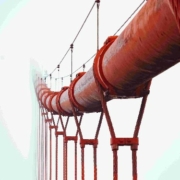In this article, we will discuss the automation of application deployment on a web server using Jenkins Pipeline. We will use Jenkins Pipeline as a script. Jenkins Pipeline as script can be of two types: declarative type and scripted type. Here, we will use declarative Jenkins Pipeline script.
Prerequisite Knowledge
- Git, GitHub
- Building Java applications using Maven
- Jenkins
- Web server like Tomcat, JBoss, etc.
If you are new to Jenkins Pipeline script, then we would recommend you to go through this article first.



